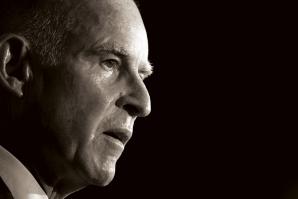In the dead of night last February, while trying to find the final votes to pass the budget, exhausted California legislators unknowingly set in motion a major change in how we do politics in this state.
After three sleepless nights of round-the-clock budget negotiations, the Legislature was still short one Republican vote in the state Senate. Sen. Abel Maldonado, a Republican from Santa Maria, was the holdout. The traditional way you get the final vote is to offer a legislator a little perk, perhaps a new fire station in his district or a highway offramp.
But Maldonado wanted something entirely different before he voted for the budget: the Legislature to place an open primary measure on next year’s ballot. At first, Senate Majority Leader Darrell Steinberg was incredulous. What does an open primary have to do with passing the budget? But Maldonado was adamant, and he soon had a friend in his corner: Gov. Arnold Schwarzenegger.
Eventually Steinberg and the Democrats went along and muscled the open primary through each house. It will now appear on the June 2010 primary election ballot. Maldonado then voted for the budget, and the rest is history.
But the open primary has the potential to make a far-reaching change in our elections. Currently, we nominate candidates for the Legislature and Congress in a closed primary, where only registered partisans can vote in their party’s primary.
The primary elections are always lower turnout elections than general elections, but when it comes to legislators, the primary is where most of them are elected. Because of gerrymandered seats and the politically polarized state, most districts are safe for one party. So the decision of who becomes a member of the Assembly or Senate is most often made in the primary election, not in November.
Consider the 9th Assembly District, which covers the city of Sacramento. It will be open next year because Assemblyman Dave Jones is termed out. The district is overwhelmingly Democratic, and all the action next June will be in the Democratic primary. It does not matter whom the Republicans nominate; he or she has no chance in November.
But under the ballot measure Maldonado forced through, the race for that seat will be different in the future. First, all candidates will appear on the same primary ballot; Republicans and independents will be able to choose between the leading Democratic candidates for a safe Democratic seat such as the 9th District. And in November, there will not be a Democratic and a Republican nominee on the ballot. Instead the two top candidates will run off regardless of party, just like we now elect local officials.
A little history on how we got here and what this means: Californians voted for an open primary in 1996; and for two election cycles, 1998 and 2000, all primary candidates appeared on the same ballot. This gave voters a wider choice, and more pragmatic and centrist legislators were elected. But the parties did not like this system. They went to court claiming Democrats should not be picking the Republican nominee and vice versa. Eventually the Supreme Court agreed, and the open primary was declared unconstitutional.
But the court left an out. If there were no party nominee, an open primary would be constitutional. The state of Washington took the court up on this and passed a nonpartisan primary with a top two runoff, and the Supreme Court gave this system its blessing in 2008.
That’s what Maldonado has placed before California voters. We will have, in effect, a nonpartisan primary in which any candidate can run, and all voters will vote on the same ballot. The top two will run off, but they will not be party nominees though they can express a preference for a party. And some runoffs may have two candidates of the same party.
Why is this so important? A politician today appeals only to the base voters in his or her district. Democrats pander to the public employee unions, Republicans to the anti-tax crowd. That’s because these special interests control the primary process. The turnout is usually low, mostly party activists, and with independent expenditures, these interests often can dictate who is nominated.
The nonpartisan primary opens up the process to all the voters in a district, not just the partisan activists. It means a successful candidate must appeal across party lines. All voters will get a meaningful chance to choose their legislators. That is not the case today.
Today we get a competitive general election race only in marginal districts. But under this proposal, the general election for the legislatures and Congress will resemble the runoff election for mayor or county supervisor. In heavily one-party districts, voters will be choosing between candidates of the same party. And not all the runoffs will involve a Democrat and a Republican. The legislators who emerge from this new system are more likely to be pragmatic and centrist because they must appeal to all their voters not just the party activists.
So California is on the cusp of a major change in how we elect its officials, all because one senator held out in an all-night struggle over the state budget.
Tony Quinn is co-editor of the California Target Book, a nonpartisan analysis of legislative and congressional elections.
Recommended For You

Hoops & Hurdles
The struggle to sell Jerry Brown's tax measure
If the people of California won’t vote to tax Big Tobacco or Big Oil, why does Gov. Jerry Brown think they’ll vote to tax themselves?

What They Don’t Tell You
The hidden agendas behind Gov. Brown's tax initiative
Gov. Jerry Brown’s tax measure would raise sales taxes by one-quarter of a percent for four years and increase taxes on incomes of $250,000 or higher by 1 to 3 percentage points for seven years.



